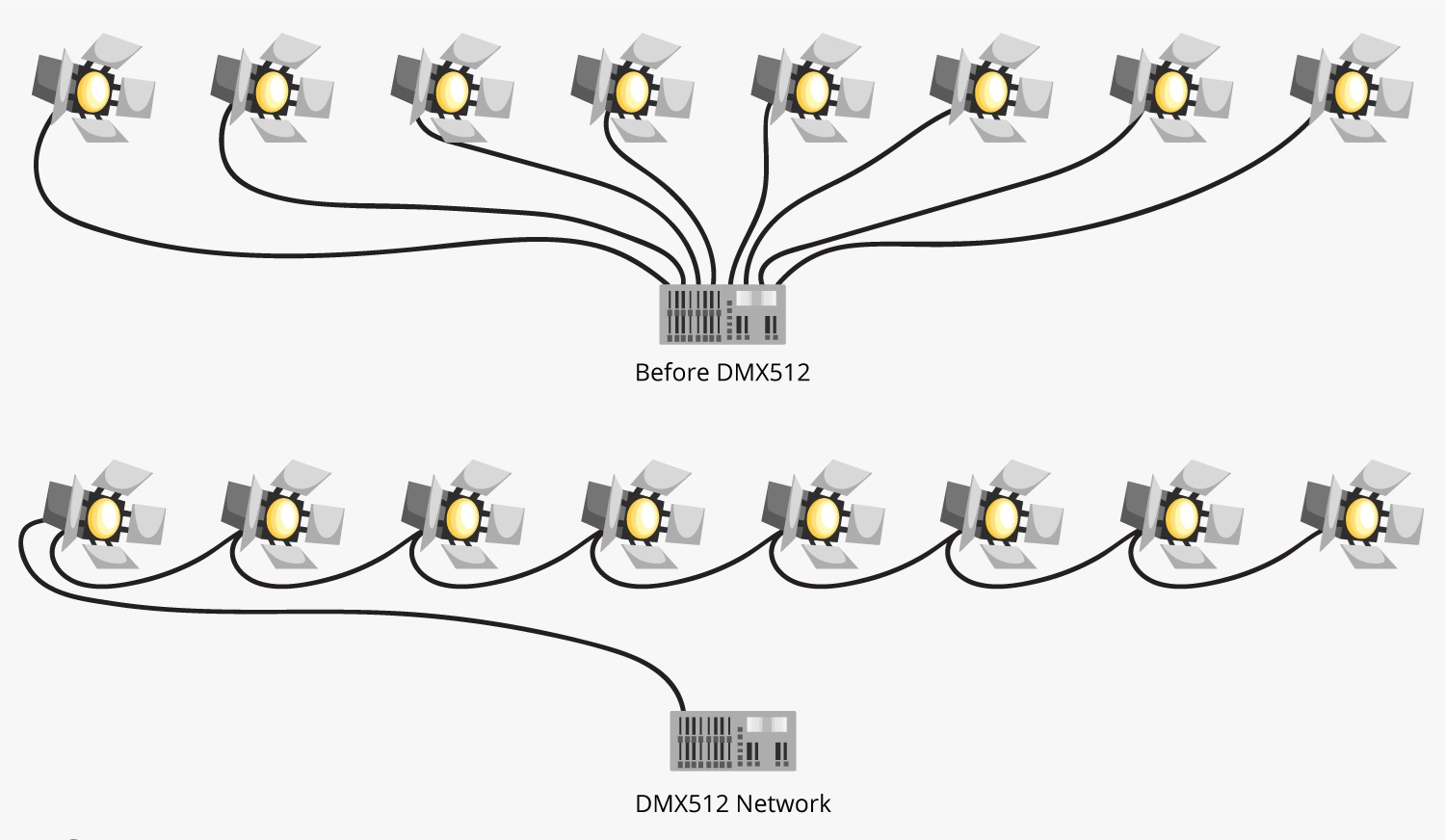
DMX (Digital Multiplex) technology offers various protocols to suit different lighting control needs. Below is a detailed explanation of the most common DMX protocols and their applications:
1. DMX512
DMX512 is the most widely used and recognized protocol in the lighting industry.
- Data Transmission: Uses physical cables to send data from a DMX controller to connected DMX fixtures.
- Baud Rate: Operates at a fixed baud rate of 250,000 bits per second.
- Applications: Common in stage lighting, live performances, and small to medium-sized productions.
- Limitations: Restricted to a single universe of 512 channels, which may not suffice for larger setups.
2. Wireless DMX
Wireless DMX eliminates the need for physical cables, making it a modern and convenient alternative.
- Advantages:
- Quicker and more cost-effective in setups where connecting devices via cables is challenging.
- No limit on the number of fixtures that can connect to a single transmitter.
- Applications: Ideal for outdoor events, temporary setups, and venues where wiring is impractical.
- Considerations: Requires robust signal quality to avoid interference.
3. Art-Net
Art-Net is a DMX-over-Ethernet protocol, offering enhanced scalability and functionality.
- Features:
- Can transmit multiple universes of DMX data through a single Ethernet cable.
- Suitable for high-bandwidth applications.
- Applications: Large-scale productions, architectural lighting, and theme parks requiring complex lighting control.
- Compatibility: Widely supported by most modern lighting equipment and software.
4. sACN (Streaming Architecture for Control Networks)
sACN is another DMX-over-Ethernet protocol designed for high efficiency.
- Features:
- Optimized for multi-universe data transmission.
- Supports synchronization across multiple controllers, ensuring seamless lighting effects.
- Applications: Often used in permanent installations, such as theaters, concert halls, and large venues.
5. RDM (Remote Device Management)
RDM is an extension of the DMX512 protocol, introducing bi-directional communication.
- Features:
- Allows controllers to send and receive data from fixtures and dimmers.
- Enables remote configuration and monitoring of connected devices.
- Applications: Useful for troubleshooting, fixture diagnostics, and simplifying complex lighting setups.
Other DMX Protocols
- ETC-Net2: Developed by ETC for advanced lighting networks.
- Pathport: Focused on flexible DMX-over-Ethernet solutions.
- Shownet: A proprietary protocol for high-performance lighting control.
- KiNET: Often used in architectural lighting for managing large-scale installations.
Conclusion
Each DMX protocol has unique advantages tailored to different needs, from small live events to complex architectural installations. By understanding these protocols, lighting professionals can choose the best technology to deliver stunning visual experiences.

